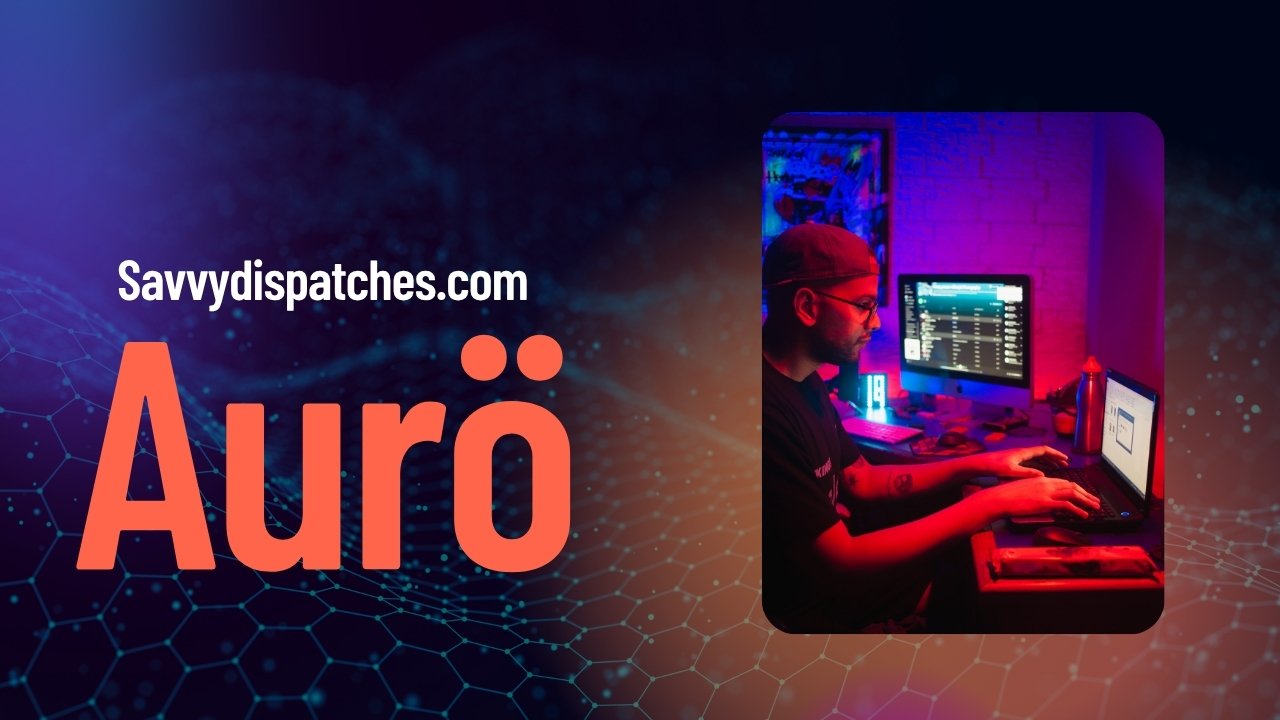Tips & Guides
How AI is Being Used to De-Age Actors in Movies

The film industry has always been at the forefront of technological advancements, and artificial intelligence (AI) is now playing a pivotal role in reshaping how movies are made. One of the most groundbreaking applications of AI in Hollywood is the ability to de-age actors. This technology allows filmmakers to make actors appear decades younger without requiring extensive makeup or casting look-alikes. From blockbuster franchises to biopics, AI-driven de-aging is revolutionizing storytelling and character portrayal.
The Rise of AI in De-Aging Technology
Traditionally, filmmakers relied on practical effects, prosthetics, and CGI to alter an actor’s appearance. However, these methods were often time-consuming, expensive, and not always convincing. AI-powered de-aging, on the other hand, leverages deep learning and neural networks to create hyper-realistic youthful versions of actors, enhancing realism while cutting production costs.
One of the key advantages of AI-based de-aging is its ability to analyze vast amounts of historical footage, identifying facial features, skin texture, and muscle movements. By feeding this data into deep neural networks, AI can generate an accurate and seamless younger version of an actor. This technology has already been used in major productions, enabling filmmakers to bring nostalgic elements to life while maintaining an actor’s authenticity.
Additionally, AI-powered tools are being used beyond de-aging; they also help editors create free videos with seamless visual effects, improving efficiency and reducing post-production timelines.
Notable Examples of AI De-Aging in Movies
AI de-aging technology has been making waves in Hollywood, with several high-profile films demonstrating its potential. Here are some notable examples:
1. The Irishman (2019)
Martin Scorsese’s crime epic, The Irishman, featured extensive AI de-aging on Robert De Niro, Al Pacino, and Joe Pesci. Using deep learning algorithms, Industrial Light & Magic (ILM) developed a sophisticated technique to make the actors appear decades younger without using traditional motion capture markers. The result was a seamless transformation that allowed the actors to portray their characters over multiple timelines.
2. Captain Marvel (2019)
Marvel Studios has been at the forefront of digital de-aging, and Captain Marvel showcased one of its most impressive applications. Samuel L. Jackson, who was in his 70s at the time, was digitally de-aged to appear as a younger Nick Fury from the 1990s. AI algorithms processed his past performances, helping VFX artists create a believable younger version without altering his performance dynamics.
3. Star Wars: The Rise of Skywalker (2019)
In The Rise of Skywalker, AI-driven de-aging was used to bring back a younger version of Princess Leia, played by the late Carrie Fisher. The process involved AI learning from archival footage, allowing filmmakers to create new scenes featuring Leia without relying solely on CGI models.
How AI-Powered De-Aging Works
The de-aging process involves several key AI techniques, including:
1. Deep Learning and Neural Networks
AI systems analyze thousands of facial images and videos to understand how an actor’s features have changed over time. Deep learning models then reconstruct younger versions of the actor based on this data, ensuring a natural and realistic look.
2. Generative Adversarial Networks (GANs)
GANs consist of two competing AI models: one generates a younger version of the actor, while the other critiques and refines the results. This process continues until the AI produces a highly realistic and indistinguishable de-aged version.
3. Facial Tracking and Motion Capture
To maintain authenticity, AI-driven de-aging incorporates real-time facial tracking, ensuring that the younger version accurately mimics the actor’s expressions and movements.
The Benefits and Challenges of AI De-Aging
Benefits:
- Cost-Efficient: Reduces the need for extensive CGI work and reshoots.
- Enhances Storytelling: Allows actors to play younger versions of themselves, avoiding the need for multiple cast members.
- Preserves Performance Authenticity: Keeps the original actor’s expressions and movements intact, enhancing emotional depth.
Challenges:
- Ethical Concerns: AI de-aging raises questions about consent, especially for deceased actors.
- Uncanny Valley Effect: If not executed properly, AI de-aging can create unnatural or unsettling results.
- High Processing Power: Requires extensive computational resources, making it a costly endeavor for smaller studios.
The Future of AI De-Aging in Hollywood
As AI technology continues to evolve, de-aging effects will become more sophisticated, accessible, and cost-effective. We can expect AI to be integrated into real-time filmmaking, enabling actors to appear younger instantly without extensive post-production work. Furthermore, as ethical guidelines around digital likenesses develop, AI de-aging may be used more responsibly and transparently.
From allowing actors to revisit iconic roles to creating seamless flashbacks, AI-powered de-aging is redefining cinema. As Hollywood embraces this innovation, audiences can look forward to more immersive and visually stunning storytelling experiences.
Tips & Guides
Aurö: A Platform for Research, Collaboration & Networking

In today’s fast-paced academic and professional world, creating platforms that foster research collaboration, professional discussions, and networking is more important than ever. For those in the German-speaking regions, the Aurö workshop stands out as an exceptional event designed to promote the exchange of knowledge, ideas, and opportunities. Whether you’re a researcher, a professional, or someone passionate about innovation and the advancement of knowledge, the Aurö workshop offers a dynamic space for learning, growth, and connection.
This article explores what the Aurö workshop is all about, its significance in the academic and professional landscapes, and why it is an invaluable opportunity for individuals across German-speaking countries. Additionally, we will dive into how you can make the most of the event and the benefits it brings to your career and research.
What is the Aurö Workshop?
The Aurö workshop is an initiative aimed at providing a comprehensive platform for professionals and researchers from German-speaking countries to come together and share their insights. Designed to spark meaningful discussions and foster professional relationships, this workshop emphasizes the importance of collaboration and knowledge sharing.
The workshop serves several purposes:
Showcasing Research: Presenting groundbreaking research that pushes the boundaries of various disciplines.
Engaging in Professional Discussions: Providing an opportunity for scholars, industry experts, and thought leaders to engage in discussions around current challenges, trends, and innovations.
Networking: Encouraging meaningful connections and partnerships that may lead to collaborative ventures, career opportunities, and further research initiatives.
By offering these three core elements—research presentation, professional discussions, and networking—the Aurö workshop has quickly become a must-attend event for anyone in the academic or professional field.
Why is the Aurö Workshop Essential?
The Aurö workshop provides immense value to its attendees for several reasons. Let’s explore how it benefits researchers, professionals, and organizations alike.
1. Fostering Collaboration Across Borders
One of the primary benefits of attending the Aurö workshop is the opportunity to collaborate with experts and peers across the German-speaking world. The event brings together individuals from diverse sectors, creating a rich environment for cross-disciplinary collaboration.
Through networking sessions and panel discussions, you can engage with fellow professionals and researchers, exchange ideas, and even embark on collaborative projects that could lead to groundbreaking discoveries.
2. Staying Ahead of the Curve with Cutting-Edge Research
The Aurö workshop serves as a showcase for the latest trends, findings, and developments across various fields. If you’re a researcher, attending this workshop is an excellent way to stay updated on emerging research methodologies and findings.
Presenting your own research at the workshop allows you to receive valuable feedback from other experts, fine-tune your work, and refine your approach. Being part of this dynamic space means you’re at the forefront of innovation, both in terms of the ideas you’re exposed to and the insights you contribute.
3. Career Advancement Through Networking
In addition to offering educational value, the Aurö workshop provides a space for professional networking. This is a critical component for anyone looking to advance their career, particularly those in academic or research-heavy industries.
By engaging with professionals, academics, and thought leaders in your field, you increase your chances of discovering new career opportunities, forming strategic partnerships, or gaining mentorship from individuals with more experience.
4. Expanding Your Professional Skillset
Attending the Aurö workshop is not just about gaining knowledge but also about enhancing your professional skills. From presentation techniques to collaboration strategies, the event encourages personal and professional growth. Participating in discussions and learning from experts is a fantastic way to develop new perspectives, improve your communication skills, and expand your academic and professional expertise.
How to Make the Most of the Aurö Workshop
To truly benefit from the Aurö workshop, it’s essential to approach the event with a strategic mindset. Below are some practical tips to ensure you get the most value out of your experience:
1. Prepare Your Research for Presentation
If you’re attending as a presenter, ensure that your research is well-prepared and tailored for the event’s audience. Create a clear and concise presentation that highlights your key findings, methodologies, and conclusions. Be prepared to answer questions and engage in discussions that will help you refine your work.
2. Take Advantage of Networking Opportunities
Whether you’re a first-time attendee or a seasoned professional, use the networking sessions to meet as many people as possible. Bring business cards, a polished elevator pitch, and an open mind. Don’t just limit yourself to formal discussions—informal conversations in between sessions can often lead to the most fruitful connections.
3. Engage in Panel Discussions and Q&A Sessions
Don’t miss out on the panel discussions and Q&A sessions. These are excellent opportunities to engage with leading experts in your field, ask questions, and gain new insights. Taking part in these discussions shows your commitment to your field and your willingness to learn from others.
4. Follow Up After the Event
After the event, follow up with the people you met. This can be as simple as sending a thank-you note or sharing further resources related to the discussion you had. Maintaining these connections can open doors to future collaborations and opportunities.
Who Should Attend the Aurö Workshop?
The Aurö workshop is designed for a wide range of individuals who can benefit from academic and professional networking and research exchange. Some key groups that should consider attending include:
Researchers: Whether you’re in academia or private research sectors, the Aurö workshop provides an ideal space to showcase your findings and get constructive feedback from peers.
Academics and Professors: For those teaching in universities or institutions, the workshop offers exposure to cutting-edge research and networking opportunities that can inform your work and teaching.
Industry Professionals: Professionals from industries ranging from healthcare to technology can attend to learn about the latest research in their respective fields and find potential collaborators or clients.
Graduate Students: Aspiring researchers can gain insights into the research process, receive guidance from seasoned professionals, and explore career paths that emerge from academia.
Event Organizers and Thought Leaders: For those responsible for curating workshops, conferences, or symposiums, the Aurö workshop offers excellent inspiration for structuring future events.
The Future of the Aurö Workshop: What’s Next?
As the world continues to evolve and new challenges emerge, the Aurö workshop will adapt and grow. The future of this workshop lies in its ability to stay relevant, continue attracting thought leaders and innovators, and provide a space where knowledge-sharing and professional growth can flourish.
In the years to come, the Aurö workshop will likely expand its reach, incorporate more interactive elements such as virtual networking and online forums, and foster deeper collaborations on a global scale. As the workshop’s community grows, it will continue to serve as a catalyst for research innovation and career advancement.
Conclusion
The Aurö workshop is a prime opportunity for researchers, professionals, and academics to collaborate, share ideas, and network within the vibrant German-speaking community. With its strong focus on fostering discussions, presenting innovative research, and providing networking opportunities, this workshop is an invaluable event for anyone passionate about advancing their career or field of study.
If you are looking to expand your knowledge, forge meaningful connections, and present your research to an engaged audience, the Aurö workshop should be at the top of your calendar. Don’t miss out on this chance to be part of a dynamic community dedicated to shaping the future of research and professional development.
Tips & Guides
Afruimwagens: Vehicles for Efficient Crop Transportation in Agriculture

In the ever-evolving world of agriculture, efficiency is key. Farmers are constantly on the lookout for ways to streamline their operations and maximize productivity. Enter Afruimwagens—vehicles designed specifically for crop transportation purposes. These innovative machines have emerged as game-changers in the agricultural landscape, transforming how produce moves from fields to markets.
Imagine navigating through expansive farmlands with ease, all while ensuring your harvest reaches its destination fresh and intact. That’s exactly what Afruimwagens offer: a reliable solution tailored to meet the demands of modern farming. With promises of durability, versatility, and enhanced logistics, they’re capturing attention across the industry.
Let’s dive into how these vehicles are reshaping agricultural transport and unlocking new opportunities for farmers everywhere!
How Afruimwagens Improve Efficiency in Crop Transportation
Afruimwagens are transforming the way crops reach their destination. These specialized vehicles streamline transportation processes, making them faster and more reliable.
With sturdy construction and spacious designs, Afruimwagens can carry larger loads. This capability reduces the number of trips needed to transport goods from farms to markets.
Their versatility allows for easy maneuvering on various terrains. Whether navigating narrow paths or rough fields, these vehicles adapt effortlessly.
Additionally, Afruimwagens are often equipped with features that protect crops during transit. Proper cushioning prevents damage, ensuring produce arrives fresh and intact.
The efficiency gained through using Afruimwagens translates into cost savings for farmers as well. Reduced fuel consumption and lower labor costs enhance profitability in agricultural operations.
Adopting this innovative mode of transport means farmers can focus more on production rather than logistics challenges.
Different Types of Afruimwagens and Their Features
Afruimwagens come in various designs, each tailored to meet specific agricultural needs. One popular type is the flatbed Afruimwagen. This model offers a spacious loading area, ideal for transporting bulk crops like grains and vegetables.
Another variant is the enclosed Afruimwagen. With a protective cover, it safeguards produce from harsh weather conditions during transport. Farmers appreciate this feature during rainy seasons or extreme heat.
Tipping Afruimwagens are designed for quick unloading. Their hydraulic systems allow loads to be dumped easily, saving time when dealing with large harvests.
For those needing versatility, multi-purpose Afruimwagens are available. These models can adapt to carry different types of goods, making them useful across multiple farming tasks.
Each type enhances efficiency in crop transportation while addressing unique challenges faced by farmers today.
Benefits of Using Afruimwagens in Agriculture
Afruimwagens revolutionize agricultural transport by enhancing productivity. Their robust design ensures that crops are moved quickly and safely from fields to markets.
Farmers benefit significantly from reduced labor costs. With Afruimwagens, fewer workers are needed for transportation tasks, allowing them to focus on other essential activities.
These vehicles also minimize crop damage during transit. The thoughtful engineering provides better support and stability, ensuring that produce arrives in excellent condition.
Moreover, Afruimwagens can adapt to various terrains. Whether navigating rough fields or smooth roads, they maintain efficiency across diverse landscapes.
Their versatility extends beyond just transporting crops; these vehicles can handle different types of loads with ease. This flexibility makes them invaluable assets on any farm.
Investing in Afruimwagens means embracing sustainability too. Efficient transport reduces fuel consumption and carbon emissions over time, leading to a greener agricultural practice.
Case Studies of Successful Implementation
Various agricultural enterprises have successfully integrated Afruimwagens into their operations, showcasing the transformative impact of these vehicles.
One notable example is a large-scale farm in Kenya. By adopting Afruimwagens, they reduced transportation time for harvested crops by 30%. This efficiency allowed them to deliver fresher produce to markets quickly.
In South Africa, a cooperative of smallholder farmers utilized Afruimwagens to pool resources. They were able to transport diverse crops collectively, thus maximizing load capacity and minimizing costs. This collaboration boosted local economies significantly.
A vineyard in California highlighted how Afruimwagens improved logistics during harvest season. With increased carrying capacity and maneuverability within tight rows, they achieved higher productivity without compromising quality.
These case studies illustrate the adaptability and effectiveness of Afruimwagens across different agricultural settings. The results speak volumes about their potential for future growth in crop transportation solutions.
Challenges and Solutions for Implementing Afruimwagens
Implementing Afruimwagens can come with a set of challenges that farmers must navigate. One major hurdle is the initial investment cost. Many smallholder farmers may find it difficult to afford these specialized vehicles upfront.
Training is another significant factor. Operators need to be knowledgeable about maintaining and efficiently using Afruimwagens. This requires time and resources, which some farms might lack.
Maintenance issues also arise over time. Wear and tear on machinery can lead to unexpected downtime if not properly managed.
To address these challenges, financial assistance programs can make funding more accessible for farmers. Additionally, workshops or training sessions can ensure operators are well-equipped with necessary skills.
Building a community support system where experienced users share insights could further ease the transition into using Afruimwagens effectively in agriculture settings.
Conclusion
The future of crop transportation is bright with Afruimwagens leading the way. These specialized vehicles are designed to meet the unique demands of agricultural logistics, providing an efficient and effective solution for farmers around the globe. As agriculture continues to evolve, so will the technology behind Afruimwagens.
With advancements in engineering and design, these vehicles are becoming more versatile than ever. They not only enhance productivity but also promote sustainability within farming practices. The integration of smart technology into Afruimwagens could optimize routes and reduce fuel consumption even further.
Farmers who adopt Afruimwagens can expect improved yield management and better market access for their products. This transition enhances profitability while ensuring fresh produce reaches consumers promptly.
As more agricultural businesses recognize the importance of efficient crop transportation, we can anticipate a growing trend towards adopting these innovative solutions. Embracing change will ultimately lead to a more resilient agricultural sector capable of meeting global food demands efficiently and sustainably.
Tips & Guides
Tarnplanen: The Essential Camouflage Tarps for Outdoor Shelters

When it comes to outdoor adventures, having the right gear can make all the difference. Enter tarnplanen—camouflage tarps designed for those who want both utility and stealth in their outdoor shelters. Whether you’re a seasoned camper, a wildlife photographer, or someone just looking to escape into nature, these versatile tarps offer essential protection while blending seamlessly into your surroundings.
Imagine setting up camp under the cover of trees or along a riverbank without drawing attention. Tarnplanen allows you to do just that. With various designs mimicking natural landscapes, they provide shelter from rain and sun while keeping your presence discreet. Let’s dive deeper into why these camo tarps are becoming indispensable tools for outdoor enthusiasts everywhere!
Benefits of Using Camouflage Tarps for Outdoor Shelters
Camouflage tarps offer a unique advantage for outdoor enthusiasts seeking shelter. Their designed patterns help blend seamlessly with natural surroundings. This significantly reduces visibility, making them ideal for hunting or wildlife observation.
Durability is another key benefit. Most camouflage tarps are made from high-quality materials that withstand harsh weather conditions. Rain, wind, and UV rays won’t easily damage them.
Lightweight yet sturdy, these tarps are easy to transport and set up. You can quickly transform any area into a hidden retreat without hassle.
Additionally, they provide excellent protection against the elements while maintaining comfort inside your shelter. With their versatility, you can use tarnplanen in various scenarios—from camping trips to emergency situations.
Whether you’re an avid camper or just enjoy outdoor adventures on weekends, camouflage tarps enhance your experience by providing practicality and stealth when needed most.
Different Types of Tarnplanen and Their Features
Tarnplanen come in various types, each designed for specific outdoor needs. The most common are the standard camo tarps, which blend seamlessly into forest environments. These often feature a mix of greens and browns, perfect for hunting or camping.
Another type is the digital camouflage tarp. It employs pixelated patterns that disrupt outlines and enhance concealment in varied terrains. This makes it a favorite among military enthusiasts.
There are also lightweight options made from waterproof materials. These are ideal for backpackers seeking easy portability without sacrificing durability.
Some advanced models include reinforced grommets and tie-down points, offering flexibility in setup. Others might boast UV-resistant coatings to protect against sun damage during prolonged use.
Each variation serves its purpose well, catering to different preferences and situations outdoors. Choosing wisely can significantly impact your experience while on an adventure.
How to Choose the Right Tarnplanen for Your Needs
Choosing the right Tarnplanen involves a few key considerations. First, think about your intended use. Are you camping in a dense forest or setting up for a weekend at the beach? The environment will dictate the type of camouflage pattern you need.
Next, consider size and weight. A larger tarp offers more coverage but can be bulkier to carry. Lightweight options are great for backpackers but might sacrifice durability.
Material matters too. Look for waterproof and tear-resistant fabrics if you’re expecting rain or rough terrain. You want something that can withstand various weather conditions while keeping your shelter secure.
Check for features like reinforced corners and grommets, which facilitate easy setup and stability against wind gusts. Taking these factors into account will ensure you find a Tarnplanen that meets your specific outdoor needs effectively.
Tips for Setting Up a Tarnplanen Shelter in the Outdoors
Setting up a Tarnplanen shelter requires some strategic thinking. Start by choosing the right location. Look for flat ground, away from falling branches and water runoff.
Next, consider the wind direction. Position your tarp to minimize exposure to strong winds. This simple step can make a big difference in comfort.
When securing your Tarnplanen, use sturdy ropes or paracord for reliable support. Ensure that each corner is taut but not overly tight; this will help prevent sagging during rain.
Pay attention to angles as well. A slight pitch can allow rainwater to run off instead of pooling at the center.
Don’t forget about accessibility! Make sure there’s easy access to your shelter while keeping it camouflaged from prying eyes.
Real-Life Examples of Tarnplanen in Action
Tarnplanen has proven to be invaluable in various outdoor scenarios. During a recent hiking expedition, a group of friends set up their camouflage tarp amid dense woods. It blended seamlessly with the surroundings, providing them shelter from unexpected rain while remaining discreet.
In another instance, wildlife photographers used Tarnplanen to create makeshift blinds. By draping the tarps over frames made of branches, they could capture stunning shots of deer without disturbing their natural habitat. The camouflaged design kept them hidden and allowed for a closer encounter with nature.
Survivalists have also embraced tarnplanen for emergency situations. In wilderness survival courses, participants learn to utilize these tarps as emergency shelters or ground cover, highlighting their versatility and practicality in the wild.
These examples reflect how Tarnplanen can enhance outdoor experiences by offering protection while maintaining an unobtrusive presence in nature’s backdrop.
Maintenance and Care for Your Tarnplanen
Caring for your Tarnplanen is crucial to ensure its longevity and functionality. After each use, inspect the tarp for any signs of wear or damage. Look out for tears, holes, or fraying edges.
Cleaning is essential as dirt and debris can degrade the material over time. Use a mild soap solution and a soft brush to gently scrub away grime. Rinse thoroughly with clean water to remove all soap residue.
Dry your Tarnplanen completely before storing it away. Moisture can lead to mold growth, which compromises its integrity. Fold it neatly instead of stuffing it into storage—this prevents creases that could weaken the fabric.
When not in use, keep your tarps stored in a cool, dry place away from direct sunlight. This will protect them from UV rays that may cause fading or brittleness over time.
By taking these simple steps, you’ll extend the life of your camouflage tarp significantly.
Conclusion
Tarnplanen are more than just tarps; they are essential tools for anyone who enjoys outdoor adventures. Their camouflage design offers both functionality and versatility, making them perfect for various outdoor shelters. By selecting the right type of tarnplanen and setting it up properly, you can create a durable and effective shelter that blends seamlessly into natural surroundings.
With proper maintenance, your tarnplanen will serve you well for many trips to come. Whether you’re camping, hunting, or simply seeking refuge from unpredictable weather conditions, these camouflage tarps have your back. Embrace the great outdoors with confidence knowing you’ve equipped yourself with one of nature’s best-kept secrets—tarnplanen offer protection while allowing you to stay connected with the wild around you. Enjoy every adventure under the cover of your reliable camouflage tarp!

 Blog10 months ago
Blog10 months agoHow to Deal with Scabies While Traveling

 Travel10 months ago
Travel10 months agoRichmond, Virginia Street Art Guide

 Travel10 months ago
Travel10 months agoPerhentian Islands: How to Get There, What to Expect, & More

 Travel10 months ago
Travel10 months agoHow to Live in Your Car in New Zealand

 Travel9 months ago
Travel9 months agoSouvenir in Nepal: A Guide to Unique Handicrafts and Cultural Treasures

 Travel9 months ago
Travel9 months agoVegan Guide to Dining Out in Richmond, Virginia

 Food9 months ago
Food9 months agoVegetarian Food Nepal: A Journey into Flavorful Plant-Based Cuisine

 Travel6 months ago
Travel6 months agoA Local’s Guide to Sanibel Island, Florida















